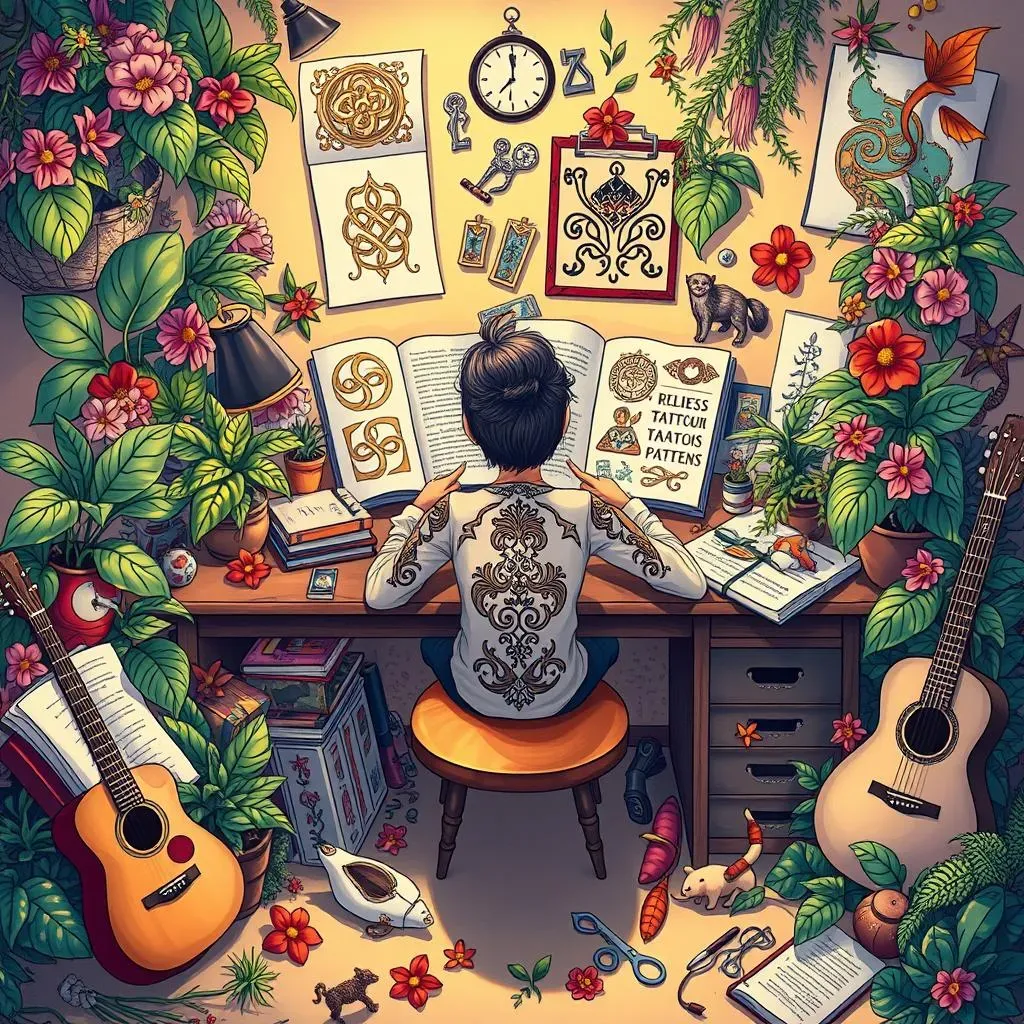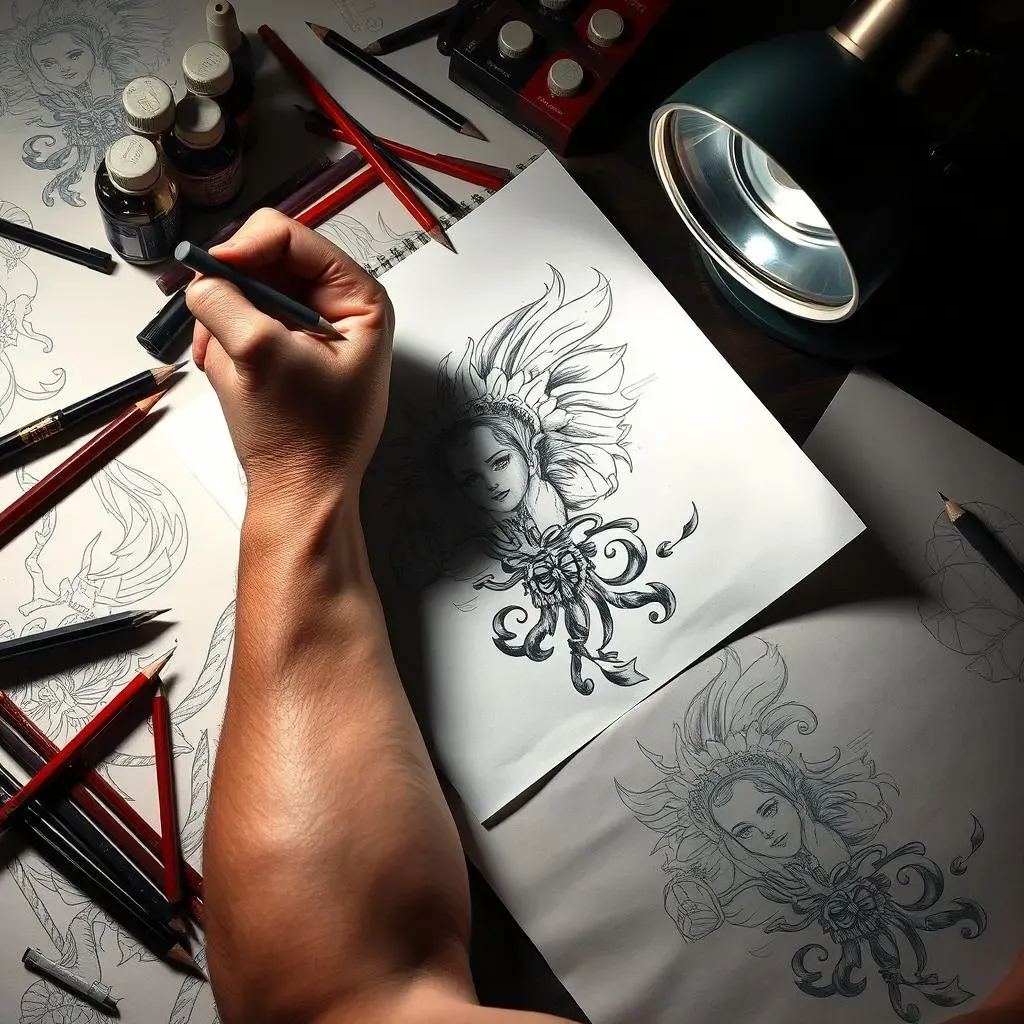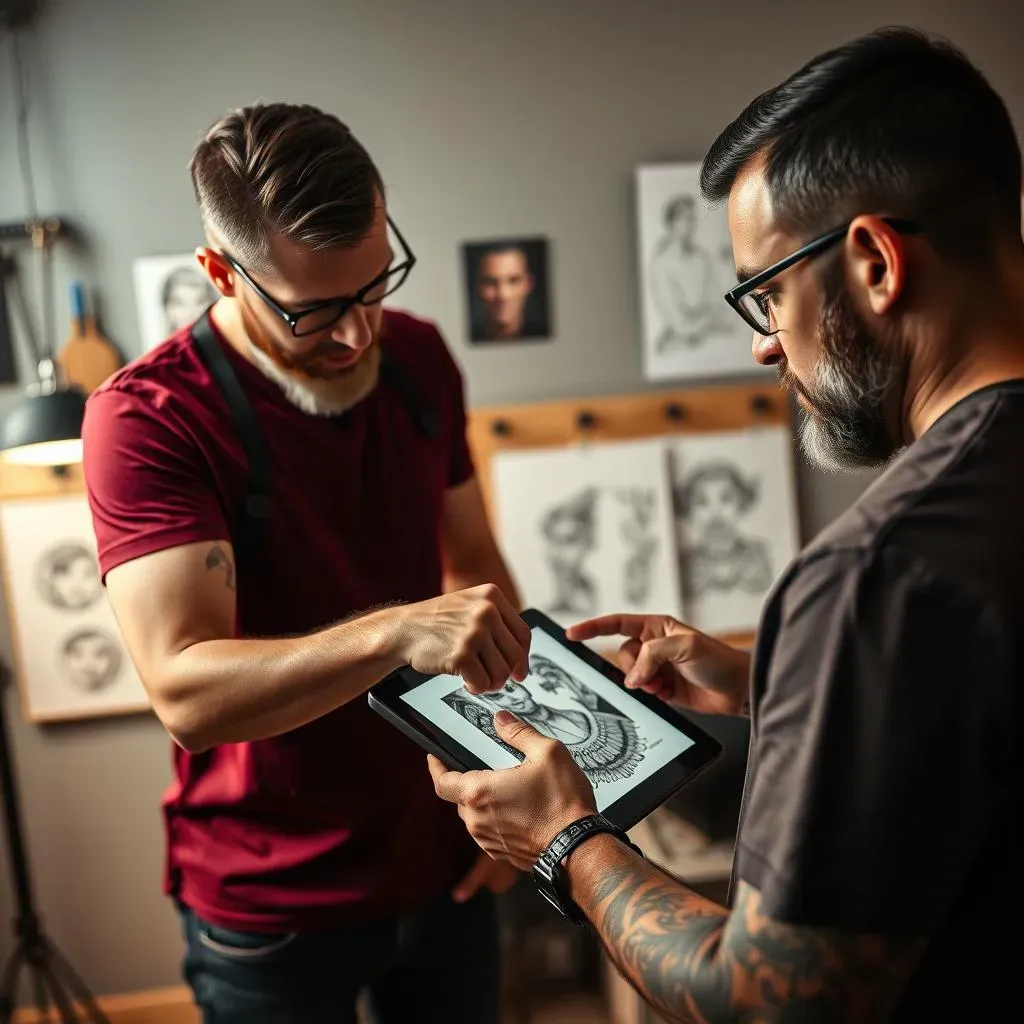Table of Contents
So, you're itching for some ink and thinking, "How do I design my tattoo that truly represents me?" You've come to the right place. Designing your own tattoo is an awesome way to get a piece of art that's totally unique and meaningful. This isn't just about picking a cool image off the internet; it's about crafting something that tells your story.
Finding Inspiration to Design Your Own Tattoo
Finding Inspiration to Design Your Own Tattoo
Dive into Art History and Culture
Forget just scrolling through Instagram! Seriously, broaden your horizons. Art history is a goldmine. Think about the intricate patterns of Celtic knots, the bold imagery of traditional Japanese tattoos (irezumi), or the symbolism in Polynesian tribal designs. Each style carries a rich history and set of meanings. Incorporating elements from these traditions can add depth and significance to your tattoo. Explore different cultures and their art forms. Maybe the vibrant colors of Mexican folk art resonate with you, or the minimalist elegance of Scandinavian design. Don't just copy; understand the context and adapt it to your own story.
For example, if you're drawn to the ocean, research traditional nautical tattoos. Anchors symbolize stability, swallows represent safe journeys, and compasses guide the way. Use these classic symbols as a starting point and then twist them to reflect your personal experiences and values.
Harness the Power of Nature
Nature is an endless source of inspiration. Flowers, animals, landscapes – they all hold symbolic weight and aesthetic beauty. Consider what aspects of nature you connect with most. Are you drawn to the strength of a lion, the grace of a swan, or the resilience of a desert cactus? Each element can represent different facets of your personality or experiences.
Think beyond the obvious. Instead of a generic rose, maybe opt for a specific variety with a unique meaning, like a black rose to represent mourning or a yellow rose for friendship. Or, consider a whole ecosystem instead of a single element. A forest scene could symbolize growth, interconnectedness, and the cycle of life.
Personalize Your Inspiration
This is where your tattoo truly becomes your own. Think about the things that make you, you. What are your passions, your hobbies, your memories? These personal elements can be powerful sources of inspiration. Maybe you're a musician. Consider incorporating musical notes, instruments, or lyrics into your design. Are you a traveler? A map, a compass, or a silhouette of your favorite landmark could be meaningful additions.
Don't be afraid to get really specific. A childhood toy, a pet's paw print, a quote from a favorite book – these seemingly small details can add a layer of depth and emotion that resonates deeply. The more personal your inspiration, the more unique and meaningful your tattoo will be. Your tattoo should tell a story, and the best stories are the ones that come from the heart.
Inspiration Source | Examples | Considerations |
|---|---|---|
Art History | Celtic knots, Japanese Irezumi, Polynesian tribal designs | Research meaning, adapt don't copy |
Nature | Flowers, animals, landscapes | Symbolic weight, personal connection |
Personal Experiences | Hobbies, memories, passions | Unique and meaningful details |
Sketching and Refining Your Tattoo Design Ideas
Sketching and Refining Your Tattoo Design Ideas
From Brainstorm to Blueprint
Alright, you've got a head full of inspiration – now it's time to get those ideas out of your head and onto paper! Don't worry about being perfect at this stage; the goal is to explore possibilities and see what resonates. Start with simple sketches, thumbnails, or even just doodles. Play around with different compositions, shapes, and line weights. Think about the overall flow of the design and how it will fit on your body. Will it be symmetrical or asymmetrical? Bold and graphic or delicate and detailed?
Experiment with different mediums too. Pencil is great for initial sketches, but you might also try pen and ink, charcoal, or even digital drawing apps. Each medium offers a different feel and can help you discover new aspects of your design. The key is to keep it loose and playful. This is your chance to make mistakes and learn from them. Embrace the imperfections and let your creativity flow.
Refining the Details and Considering Placement
Once you have a few sketches that you like, it's time to start refining the details. This is where you'll focus on line work, shading, and adding any specific elements or symbols that are important to you. Consider the placement of your tattoo and how it will interact with the contours of your body. A design that looks great on paper might not translate well to a curved surface. Think about how the tattoo will move and flex with your muscles and how it will look from different angles.
Pay attention to the negative space in your design. The empty areas around your tattoo are just as important as the inked areas. Negative space can help to create balance, contrast, and visual interest. It can also help to make your tattoo look cleaner and more legible over time. Don't be afraid to simplify your design. Sometimes, less is more. A well-executed, minimalist tattoo can be just as impactful as a complex, detailed one.
Sketching Stage | Refining Stage |
|---|---|
Brainstorming and exploring ideas | Focusing on line work and shading |
Experimenting with different compositions | Considering tattoo placement on the body |
Keeping it loose and playful | Paying attention to negative space |
Collaborating with a Tattoo Artist to Perfect Your Design
Collaborating with a Tattoo Artist to Perfect Your Design
Finding the Right Artist for Your Vision
Choosing your tattoo artist is a HUGE deal. It's not just about finding someone who can ink a design; it's about finding someone who understands your vision and can bring it to life. Do your research! Look at portfolios online, check out their Instagram, and read reviews. Pay attention to the styles they specialize in. Are they amazing at fine-line work? Do they excel at bold, traditional designs? Make sure their aesthetic aligns with what you're looking for.
Don't be afraid to reach out and ask questions. Schedule a consultation to discuss your ideas, look at their studio space, and get a feel for their personality. You want someone you feel comfortable with and who is genuinely excited about your project. This is going to be a permanent piece of art on your body, so take the time to find the right artist who can make it truly special. Remember, a good artist will also be honest about what's possible and what might need to be adjusted for the best results.
Communication is Key: Discussing Your Design
Once you've found the perfect artist, communication is paramount. Bring your sketches, your inspiration, and any reference images you have. Be prepared to explain your vision in detail and answer any questions they might have. The more information you provide, the better they'll understand what you're looking for.
Listen to their feedback and be open to suggestions. Tattoo artists are experts in their field, and they can offer valuable insights on design, placement, and technique. They might suggest tweaks to your design that will make it look better, age better, or be more structurally sound. Trust their expertise and be willing to collaborate. This is a partnership, and the best tattoos are often the result of a collaborative effort between the client and the artist.
Finding the Right Artist | Discussing Your Design |
|---|---|
Research portfolios and reviews | Bring sketches and reference images |
Schedule a consultation | Explain your vision in detail |
Assess studio atmosphere | Listen to artist's feedback |
Ensure style matches your vision | Be open to suggestions and collaboration |
Finalizing Your Tattoo Design: Size, Placement, and Aftercare
Finalizing Your Tattoo Design: Size, Placement, and Aftercare
Sizing It Right: Proportions and Longevity
you've got this killer design, but how big should it actually be? Size matters, believe me. Think about the level of detail in your design. A super intricate piece crammed into a tiny space will likely look muddy and illegible over time. Conversely, a simple design blown up too large can look awkward and lack impact. Consider the placement area. A small, delicate tattoo on a large expanse of skin might get lost, while a massive piece on a small area could feel overwhelming.
Talk to your artist about the best size for your design and placement. They can advise you on what will look best and age well. A good rule of thumb is to err on the side of slightly larger rather than smaller, especially for detailed designs. Remember, skin stretches and ages, and ink can spread over time. Give your tattoo some room to breathe.
Placement Perfection: Flowing with Your Form
Placement is everything! It can make or break a tattoo. Think about how your design will flow with the natural curves and contours of your body. A design that's forced into an awkward space will never look quite right. Consider the visibility of your tattoo. Do you want it to be easily seen, or do you prefer something more discreet? Think about your lifestyle and your work environment. Some placements are easier to conceal than others.
Certain areas are also more prone to fading or distortion. Areas that experience a lot of friction, like fingers or wrists, might require more frequent touch-ups. Bony areas, like ribs or ankles, can be more painful to tattoo. Talk to your artist about the pros and cons of different placements and choose what's right for you. And remember, placement isn't just about aesthetics; it's also about respecting your body and your comfort level.
Aftercare is Key: Protecting Your Investment
You've got your amazing new tattoo – now what? Aftercare is absolutely crucial for ensuring that your tattoo heals properly and looks its best for years to come. Listen to your artist's instructions carefully and follow them to the letter. Generally, this involves keeping the tattoo clean and moisturized, avoiding direct sunlight, and not picking or scratching at it.
Think of your new tattoo as an open wound (because it is!). You need to protect it from infection and allow it to heal properly. Use a mild, fragrance-free soap to gently clean the area, and apply a thin layer of a good-quality tattoo aftercare balm. Avoid swimming, soaking in a bath, or wearing tight clothing that could rub against the tattoo. And most importantly, be patient! Healing takes time, and it's important to let the process happen naturally. With proper aftercare, your tattoo will heal beautifully and you'll be able to enjoy it for years to come.
Aspect | Considerations | Tips |
|---|---|---|
Size | Level of detail, placement area | Err on the side of slightly larger, consult your artist |
Placement | Body contours, visibility, lifestyle | Consider pain levels, potential for fading, artist's advice |
Aftercare | Hygiene, protection, healing process | Follow artist's instructions, be patient and consistent |
Your Tattoo Journey: From Design to Reality
Designing your own tattoo is a deeply personal and rewarding experience. It's about more than just getting ink; it's about expressing yourself, honoring your story, and creating a piece of art that you'll carry with you for life. Remember to take your time, explore your inspiration, collaborate with a skilled artist, and consider all the practical aspects of placement and aftercare. With careful planning and a little creativity, you can transform your vision into a stunning tattoo that you'll cherish forever. Now go forth and create something amazing!